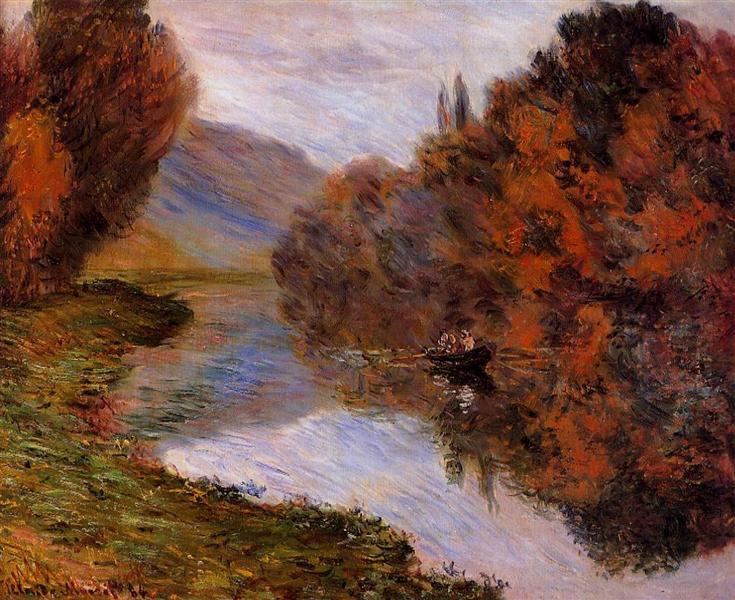Description
The work "Bumn can by the Sena in Jeufosse" by Claude Monet, painted in 1884, is a paradigmatic example of its impressionist approach and reflects the artist's mastery to capture light and movement in nature. In this painting, Monet offers a representation of a river landscape that evokes a sense of serenity through the interaction of natural elements and human activity.
The first notable aspect of composition is the use of water as a central element. The Seine, which winds through the canvas, reflects the sunlight in a variety of tones that range between the most shaded blue and the most shaded gold, characteristic of the impressionist style. Monet, known for its technique of loose and fast brushstrokes, uses this application to transmit the fluidity of the water and the constant movement of the river, inviting the viewer to almost feel the fresh breeze that accompanies this environment.
In the foreground, the rowing boat becomes the focal point of the work. Without loss of detail or excessive ornamentation, the boat is simply presented, with a single visible water, which highlights the intimate relationship between the human being and nature. This figure, although small in the composition, symbolizes the connection with the surrounding landscape. The tilt of the body of the rush and the angle of the rowing suggests a dynamic movement, capturing a moment of action within the quiet flow of the natural environment.
The color palette is another fascinating aspect of this work. The green and blue tones dominate, interspersed with white and yellow cells that suggest the sunlight that plays on the leaves of the trees and the surface of the water. Monet uses the color to create an atmosphere, making the light of day delicately reflected on each surface. The approach to color representation is a distinctive feature of impressionism, where shadows are not painted black, but with tonally complex variations that provide depth and life to the image.
The natural environment is immersed in a vibrant and almost lyrical aspect, where each brushstroke seems to evoke the sound of the water and the murmur of the surrounding vegetation. The representation of the vegetation to the riverbank, although not central in the work, complements the landscape without overloading it, and suggests an atmosphere of tranquility that echoes the suspended moment that Monet captures.
Contextually, "rowing boat for SENA in Jeufosse" is inserted within a series of works that Monet performed throughout his career, especially in his connection with nature and underwater landscapes of France. This interest in addressing the ephemeral and everyday, using a canvas to represent simple moments of life, is essential in the development of impressionism. Monet captures not only a scene, but the essence of a lived experience, something that would deeply resonate the artistic movement that helped define.
Although this specific work is not as well known as Monet's others, it reflects the same innovative approach to the light and color that characterizes its most famous works. When contemplating "bum boat for Sena in Jeufosse", the viewer is transported to such a vivid and ephemeral moment that he feels almost like a whisper of nature in motion. Monet's ability to merge everyday life with the exploration of light and the atmosphere allows its legacy to continue influencing generations of artists, turning each of its landscapes into a celebration of the present moment.
KUADROS ©, a famous paint on your wall.
Hand-made oil painting reproductions, with the quality of professional artists and the distinctive seal of KUADROS ©.
Reproduction service paintings With a guarantee of satisfaction. If you are not completely satisfied with the replica of your painting, we refund your money 100%.

